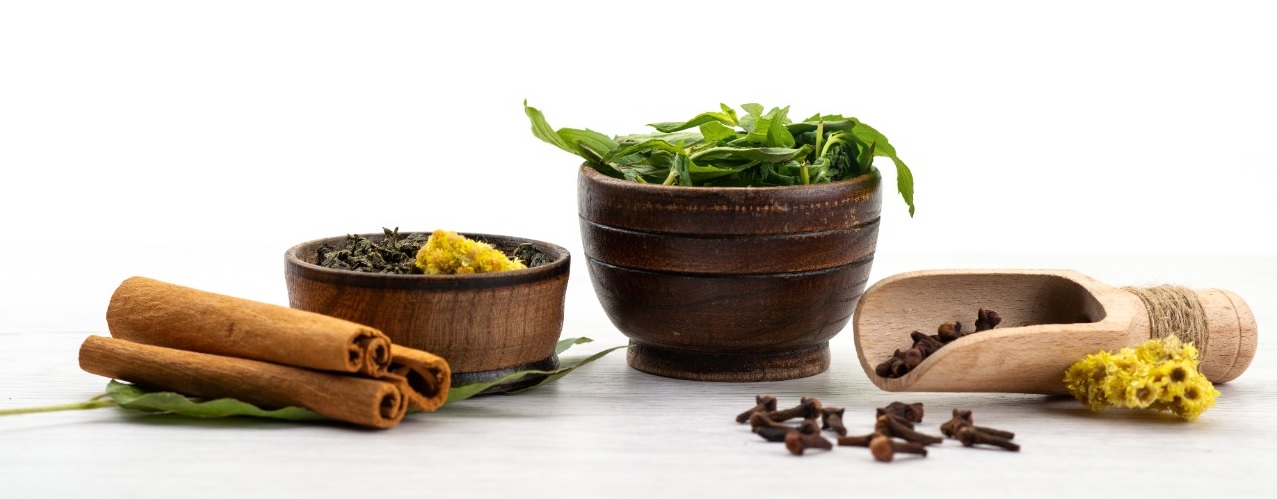Trip to Ladakh is an isolated region in northern India, located in the Himalayas and known as Little Tibet. Many Tibetan refugees fleeing Chinese tyranny come to this remote place. If you have traveled to Tibet, this small Indian enclave will not surprise you so much, but if you have not been to Tibetan lands, the temples and ceremonies you will see in Ladakh will leave you speechless. Hearing a Tibetan trumpet at dawn, from the roof of a temple with the mountains in the background is not something that can be easily forgotten.
We traveled to Ladakh by car from the town of Manali, northern India. Three days crossing the Himalayas and enjoying unforgettable landscapes. Once in the Ladakh region, we were lucky enough to be able to participate in one of the Buddhist festivals held every summer, in this case at the Hemis monastery.
We made several routes from the capital Leh, to visit the monasteries of Thiksey, Lamayuru, Archi, Likir, and the isolated region of Nubra. But to top off the trip, we were lucky enough to be able to participate in an end of Mandala ceremony at the Spituk monastery, near Leh. We spent much of the day listening to the prayers of the monks, dressed in colorful suits and hats, and we shared food with them.
The next day we saw how they destroyed the sand Mandala and performed new ceremonies… an experience that is among the best of our traveling life.
If with what we have told you, you feel like getting to know the Ladakh region, here we leave you all the information about this remote place that until recently received very few travelers.
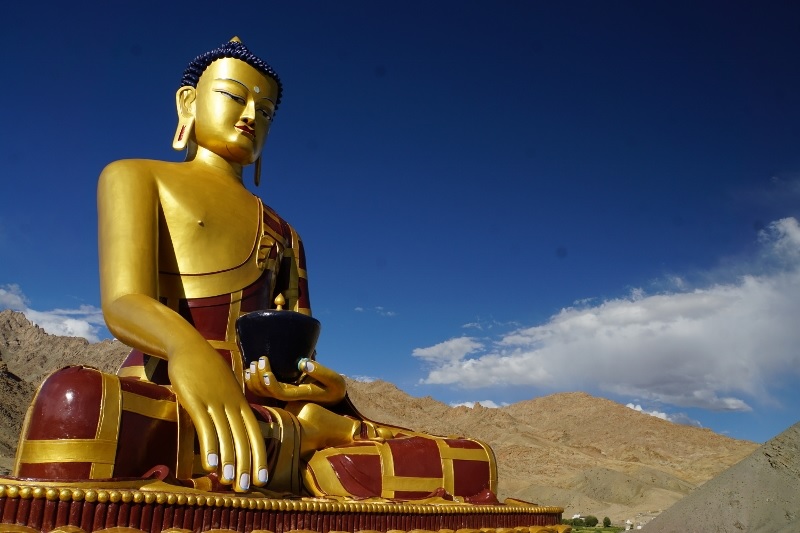
What to see in Ladakh, the little Tibet of India
Ladakh, known as Little Indian Tibet, is culturally more similar to Tibet than to India. But there is so much to see in Ladakh. so that it is worth entering the heart of the Himalayas? The answer is yes, without a doubt. In this region of the Indian state of Jammu and Kashmir, we will not only find interesting Buddhist temples.
We will also access the remote Nubra Valley after challenging the highest mountain pass in the world by car. If you reach Leh by car instead of by plane, you will see difficult endless landscapes of a beauty that is difficult to describe. And if you are a little lucky you will be able to witness some of the festivals that are celebrated in the area.

Manali to Leh Highway
The road from Manali to Leh is possibly one of the most spectacular roads in the world. Traveling through those lonely landscapes that seem unreal is an experience that is difficult to forget. The 3-day route is tough due to the altitude above 5000 meters, the lack of infrastructure for the traveler and the fact that the road is under continuous construction so there are many unexpected stops.
But, despite all these “inconveniences”, it is worth every minute we spend crossing the Himalayas to reach Ladakh.
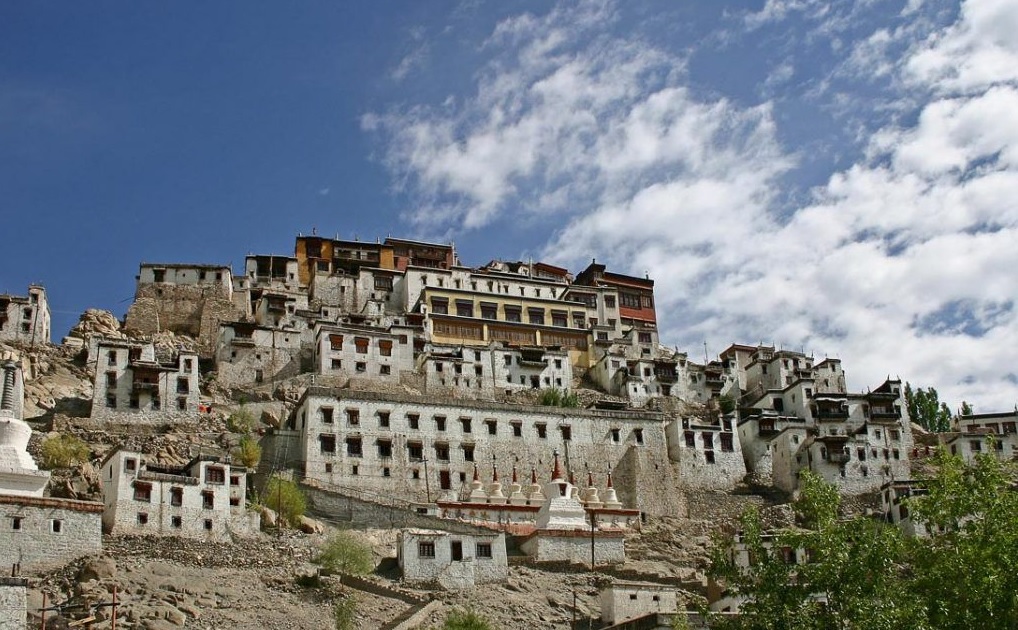
Thiksey Monastery
The first monastery we saw upon arriving in the Ladakh region was the Thiksey monastery. We were surprised and speechless when we saw so much beauty. A huge monastery hanging on a hill welcomed us and we realized that we had chosen the destination of our trip very well, despite the difficulties we had encountered in organizing it.
After sleeping in the monastery, at dawn we went to the monastery’s puja or prayer time and lived a fascinating experience listening to the powerful sound of the Tibetan trumpets from the roof of the temple.
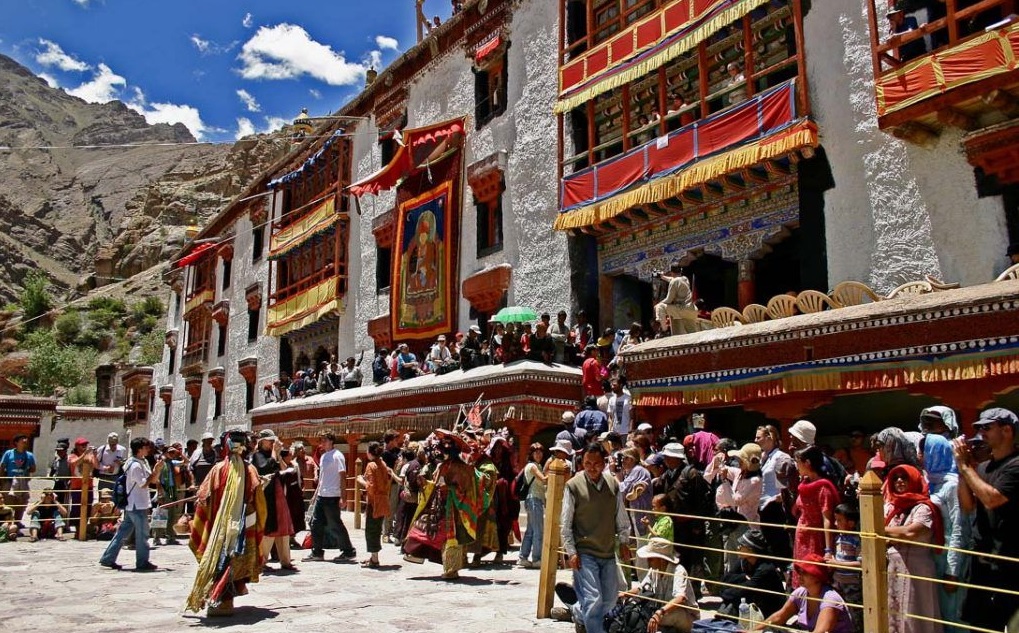
Hemis Tse-Chu (Festival)
The Buddhist festivals of Ladakh are celebrated during summer in some monasteries like Hemis and Lamayuru. It is important that you check the exact dates of any of the festivals to make them coincide with your trip. You should not miss this curious display of religious culture full of dances, beautiful costumes, masks and sounds of Tibetan trumpets.
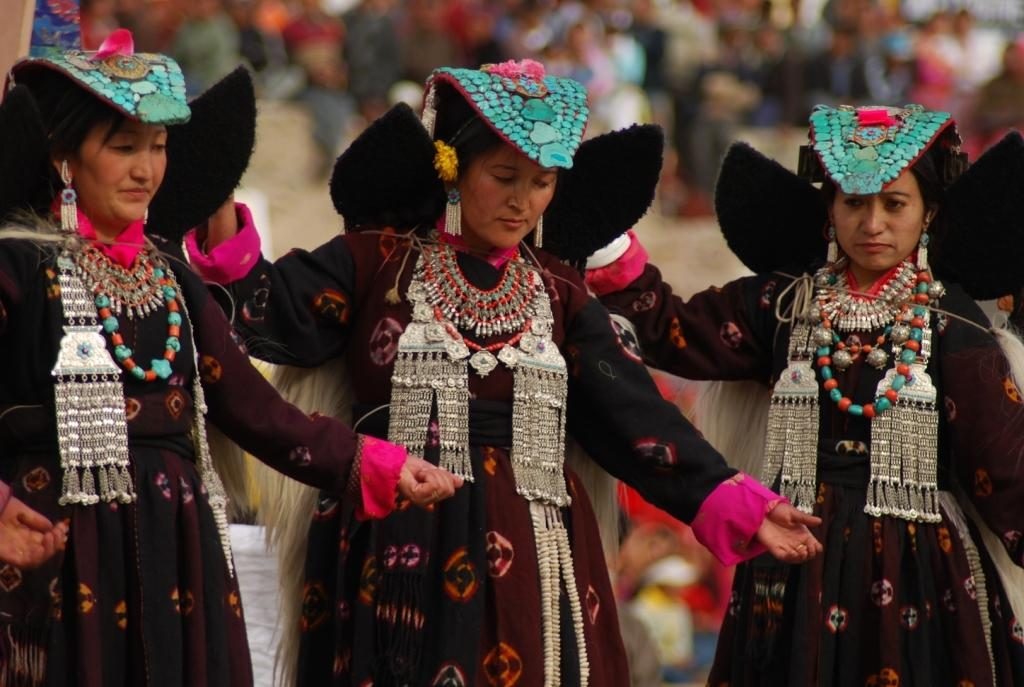
Stakna Monastery
Stakna Monastery, south of Leh, is one of the most photogenic monasteries in Ladakh, situated atop a hill beneath which the Indus River meanders. Although once up it is not one of the most beautiful temples in the region, it is worth seeing from a viewpoint in the distance.
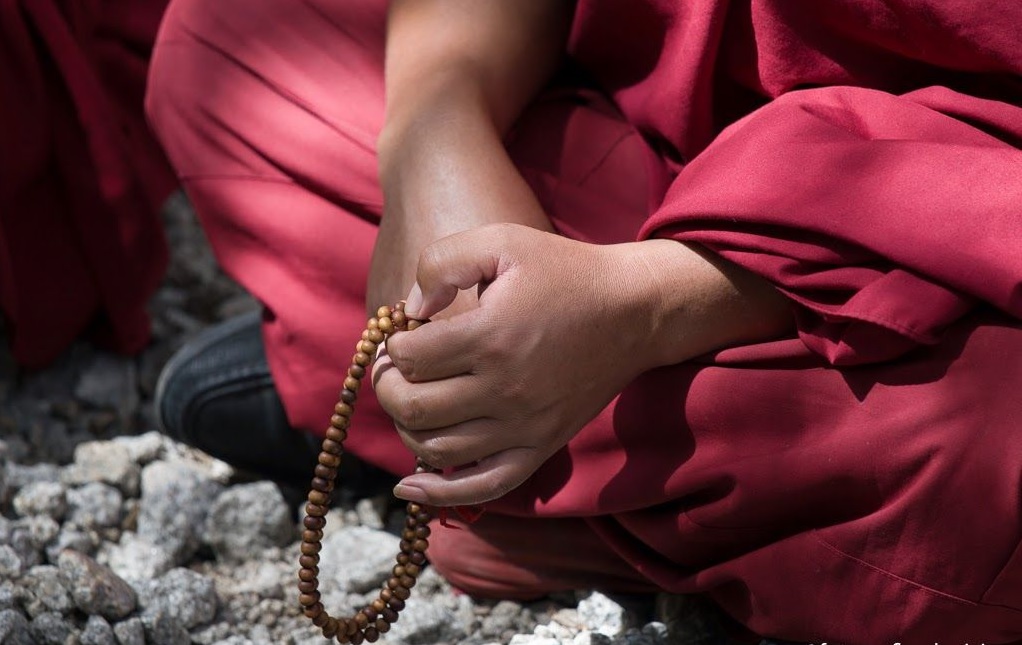
Basgo
Basgo, the ancient capital of Ladakh, is situated on the road leading from Leh to Lamayuru.
Today Basgo, seen from the bottom of the hill, is just a pile of ruins. However, when we reached the top we found that three gompas were still standing. The largest of them has some beautiful paintings and a huge statue of Maitreya, the Buddha of the future.

Likir Monastery
A fascinating Likir monastery with its white buildings with reddish roofs, and with a background that looks like a setting of snow-capped mountains, is one of the essential visits to see in Ladakh. Just to see that beautiful picture is worth going there.

Alchi Monastery
The Alchi monastery, although it does not have any beauty on the outside, hides secrets inside that are among the best things to see in Ladakh. Its ancient paintings, which are the best in the entire region, and its 2-story Buddha are truly marvelous. Furthermore, we were able to see it alone, with a flashlight to be able to clearly distinguish the paintings and listening only to the sound of the wooden floor that creaked under our feet.
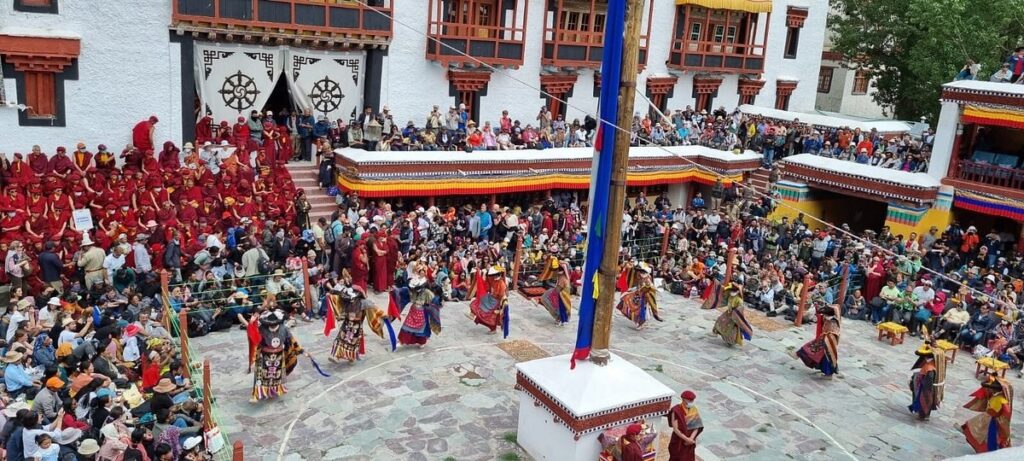
Rizong Monastery
We remember Rizong Monastery with great affection as a monk led us to the monastery kitchens to treat us to champa, Tibetan tea made with yak butter. A sample of the kindness of the monks who always welcomed us with hospitality in all the monasteries that we were able to visit in Ladakh.

Lamayuru Monastery
A festival similar to the one we saw in Hemis is also celebrated in the Lamayuru monastery. We came there to see the monastery, which although it is located in a spectacular environment and is very beautiful from the outside, inside it is one of the least interesting in Ladakh.
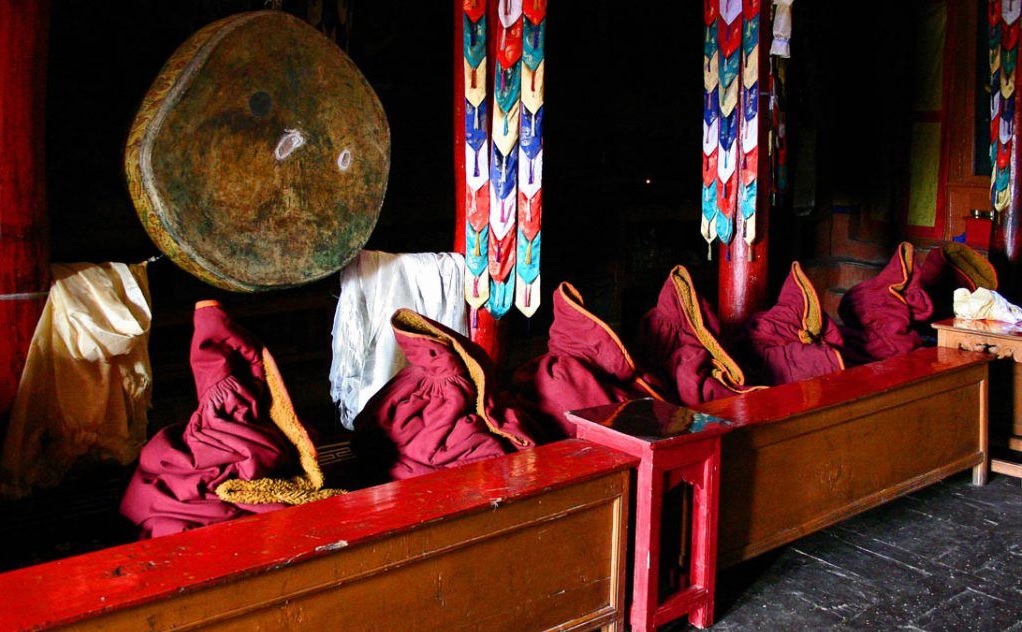
Spituk
In the Spituk monastery near Leh, we had the best experience of the trip. Unknowingly, we arrived at the temple in the middle of a special celebration, a puja for the completion of a mandala. In monasteries, monks compose a colored sand mandala for months, and it is destroyed 4 days after finishing it, as a symbol of the finitude of life.
In the prayer room we found dozens of monks playing cymbals and trumpets while wearing bright yellow hats. We spent hours there, shared food with them and returned a few days later to see how the mandala was destroyed and how they distributed grains of sand among us and the rest was thrown into the river.
An experience that is counted among one of the best of our traveling life.
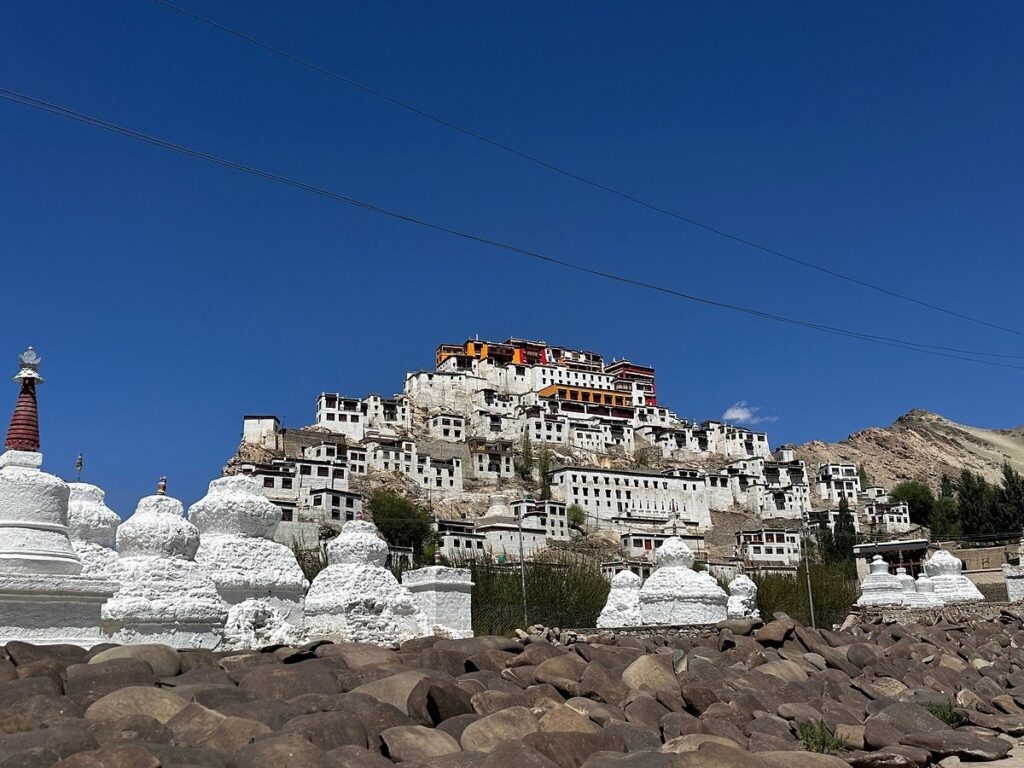
Khardung-la Mountain Pass
On the way from Leh to Nubra Valley, you have to cross the Khardung-La mountain pass by road.
We crossed this mountain pass at 5,359 meters above sea level, snowing, in an old car with broken window panes and almost no visibility. They were tense moments watching the precipice next to us, while the snow fell heavily on our car with fogged-up windows. Our driver, accustomed to these weather conditions, could not stop laughing at our unjustified fear and that we did not stop repeating “come back to Leh”, “Come back to Leh”. After crossing the Khardung-la pass, it cleared and everything was compensated by the magnificent scenery of the Nubra Valley.

Nubra Valley
If Ladakh is an isolated region, the Nubra Valley is doubly isolated. To get there you have to obtain special permits in Leh, and then cross one of the highest mountain passes in the world, the Khardung-la mountain.
What to Expect from a Trip to Ladakh India

